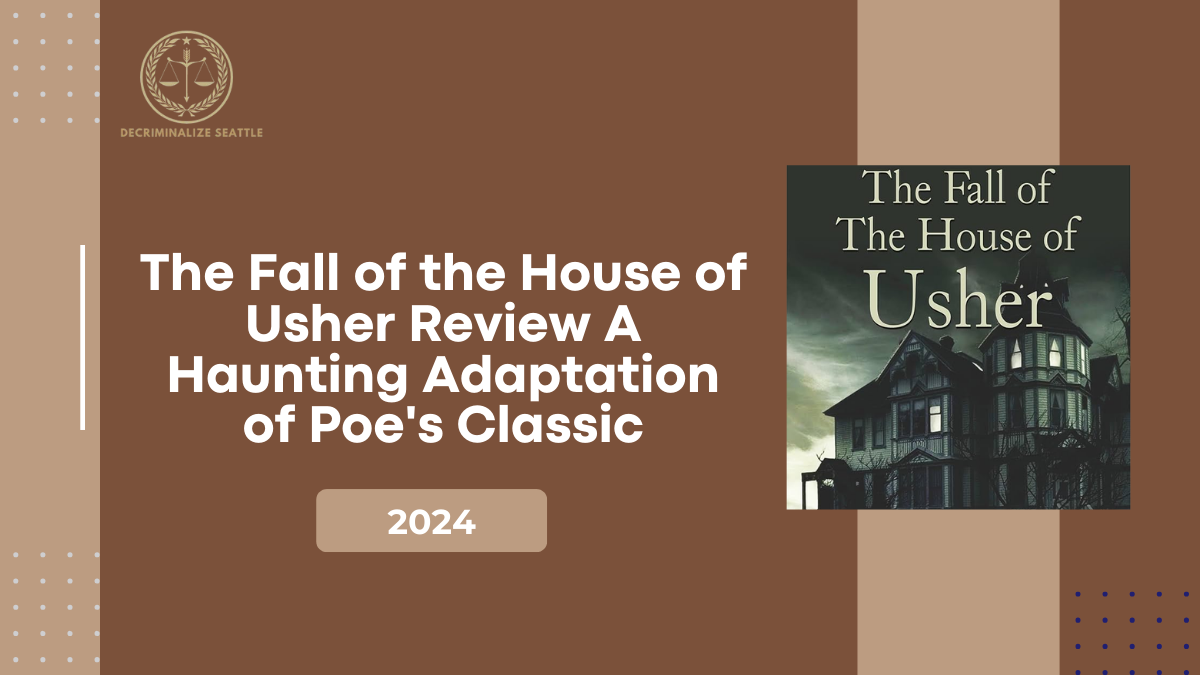The Fall of the House of Usher, the new Netflix series directed by Mike Flanagan, has captivated audiences with its blend of horror, psychological tension, and Gothic drama. This eight-episode adaptation draws inspiration from Edgar Allan Poe’s 1839 short story, infusing it with modern themes and a unique twist. By weaving in elements from other works by Poe, Flanagan has created an ambitious tapestry that transcends the classic Gothic horror genre, aiming to resonate with contemporary viewers.
This review will explore how the series stands out for its storytelling, character development, and visual impact, making it a fresh yet faithful homage to Poe’s work.

Faithful to the Gothic Roots
At its core, The Fall of the House of Usher retains the deeply Gothic atmosphere that characterizes Poe’s original tale. Set in a decaying mansion, the series unfolds around the Usher family, plagued by dark secrets and eerie supernatural occurrences. Flanagan’s work is known for emphasizing emotional depth and psychological horror, and he delivers on both fronts here. The setting is a world of shadows, haunted memories, and looming death, true to the Gothic tradition that Poe mastered.
However, Flanagan expands Poe’s singular short story into a modern, intricate family saga, reminiscent of his previous adaptations such as The Haunting of Hill House and The Haunting of Bly Manor. He achieves this through both visual cues and dialogue that evoke Poe’s melancholy and dread. Each episode is steeped in references to Poe’s other works, including The Raven, The Tell-Tale Heart, and The Masque of the Red Death. These interwoven references build a universe that is not only faithful to Poe’s tone but also inventive in its retelling.
Characters and Performances: Bringing the Usher Family to Life
One of the series’ strengths lies in its complex characters, led by a remarkable cast. Bruce Greenwood stars as Roderick Usher, the patriarch of the Usher family, delivering a portrayal that is both formidable and vulnerable. His character’s presence is imposing, and his descent into guilt and madness is palpable, mirroring the despair that Poe’s protagonists often endure.
Carla Gugino, a regular in Flanagan’s projects, plays a mysterious figure who haunts the Ushers, embodying multiple aspects of Poe’s female archetypes — alluring, enigmatic, and terrifying. Her character becomes a personification of the family’s haunting past and eventual ruin. Other cast members, including Henry Thomas, Samantha Sloyan, and T’Nia Miller, bring depth to the complex web of relationships within the Usher family. The performances are riveting, with each character contributing to the overarching theme of corruption, familial ties, and inevitable collapse.
Storytelling and Visuals: Building Tension through Symbolism
Flanagan’s storytelling method balances subtlety with tension, allowing each episode to build on the mystery surrounding the Ushers’ cursed legacy. The narrative explores themes of greed, guilt, and moral decay, reflecting Poe’s own preoccupation with human frailty and sin. The visual symbolism — dark hallways, decaying architecture, and pervasive shadows — reinforces the foreboding atmosphere. These images serve as metaphors for the character’s inner turmoil and moral descent.
The visual style is a standout aspect of the series, with cinematography that enhances its Gothic appeal. The dark and muted colour palette reflects the Ushers’ bleak fate, while creative framing adds layers of unease and suspense. The series is peppered with subtle nods to Poe’s work, inviting viewers to look for hidden meanings and symbols. This adds richness to the narrative that rewards Poe enthusiasts without alienating new viewers.
Themes of Power and Legacy: A Timely Commentary
While The Fall of the House of Usher is steeped in Gothic horror, it also serves as a commentary on contemporary issues of wealth and power. The Usher family, at the top of an empire, is plagued by secrets and corruption that ultimately lead to their undoing. This element of the series feels relevant, tapping into current societal debates about the cost of power and privilege. Flanagan’s adaptation turns the fall of a family dynasty into a cautionary tale about the dangers of unchecked ambition and moral decay, a theme that transcends its 19th-century origins to resonate with today’s audiences.
Conclusion
Mike Flanagan’s The Fall of the House of Usher is a skilful and chilling adaptation that honours Edgar Allan Poe’s work while bringing new dimensions to his Gothic themes. With exceptional performances, atmospheric visuals, and a story that intertwines horror with psychological complexity, the series is a fresh addition to Netflix’s lineup of horror content. By expanding on Poe’s story and incorporating modern social themes, The Fall of the House of Usher succeeds as both a tribute to the master of Gothic literature and as a standalone narrative that captures the terror of facing one’s past. This adaptation will likely satisfy Poe purists while also appealing to modern viewers looking for horror that is both thought-provoking and deeply unsettling.
Click here to know more.